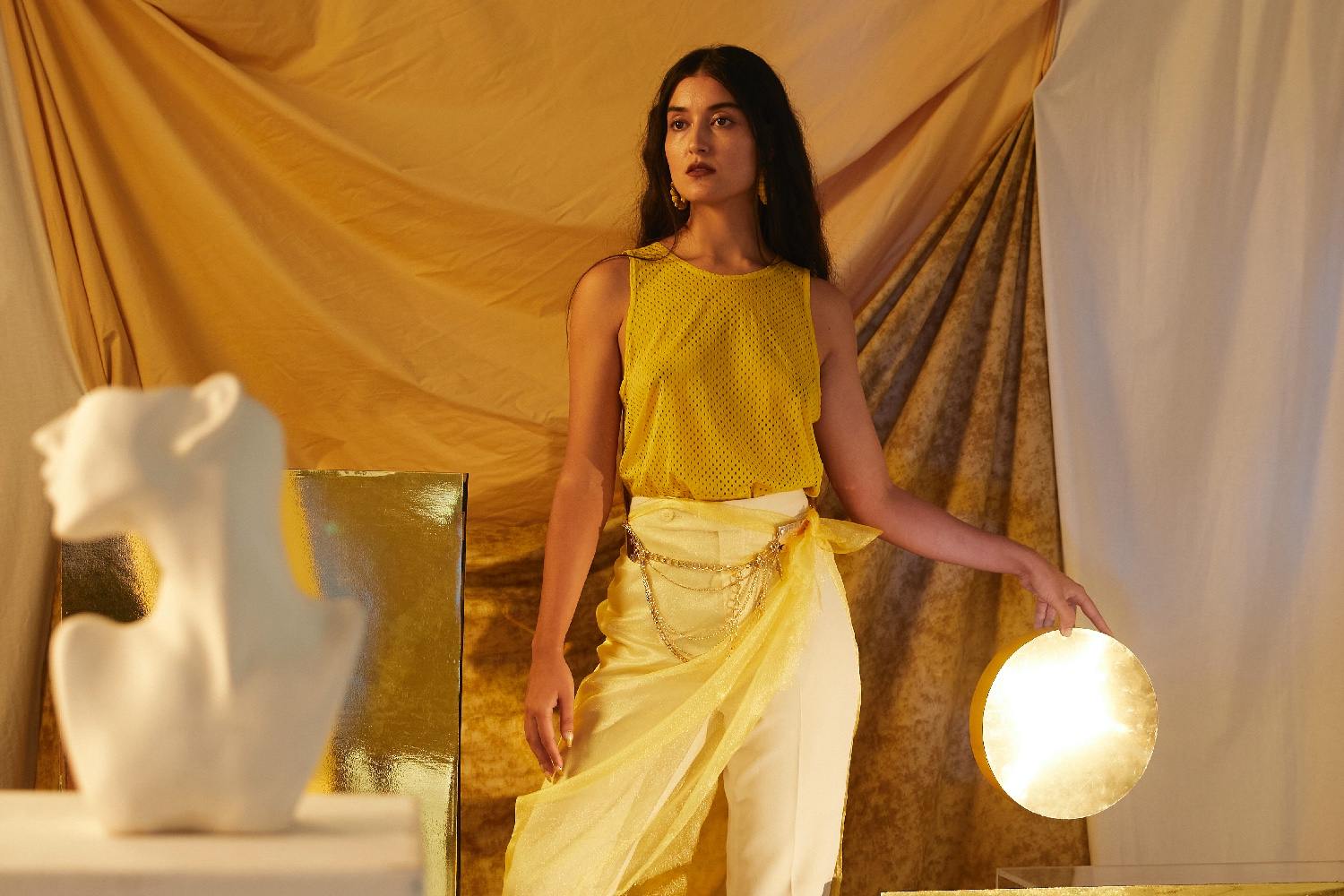From arrangements, to recording, to equipment, we discuss it all with the prodigious Sydney-based future-R&B artist
Milan Ring: Real name, no gimmicks. On paper, this is merely a cheap adaptation of Obie Trice’s signature introduction from Eminem’s 2002 hit ‘Without Me’. Rest assured, it still very much is that – but it’s also pertinent given there’s probably no better arrangement of four words to get across what this prodigious Sydney-based future-R&B artist is doing. When you hear Milan Ring’s music, there’s no hidden agenda or algorithm to appease – it’s simply a burst of heart, soul, and an unstoppable creative streak, all of which has culminated on her debut album, I’m Feeling Hopeful.
Read up on all the latest interviews, features and columns here.
It’s also worth noting that when you hear Milan Ring’s music, you’re literally hearing Milan Ring. That’s her singing every last vocal line (save for guest appearances), that’s her laying down every pristine guitar chord, that’s her beats, that’s her arrangement… and if that wasn’t enough, that’s her production and that’s her mix. The amount of other artists working in this country right now with more agency over their songs and their sound, you could likely count on one thumbless hand. With such a variety of avenues to work within, Ring is queried on where her songs typically find themselves formulating – specifically, those that made it onto I’m Feeling Hopeful’s final tracklist.
“There really isn’t a clear-cut method,” she responds. “If I’m starting a song with just guitar and vocals, which I do sometimes, I will be playing and singing and I’ll start to have an idea. I’ll start to envision backing vocal parts, and then I’ll maybe hear a bass riff. I just try to throw down a basic demo as quick as possible, so I’ve got it there as a memory. They usually sound really rough, but when I listen to it, I can hear all the other parts. I can hear the potential. I always hate playing people demos because they’re not hearing what I’m hearing. A lot of it is in the post-production phase, and even into the mixing phase. It’s trial and error, with a lot of experimenting and discovery as I go. Once I put in one part, it informs another, and so they end up sounding different again from how I first envisioned them.”
Ring’s live shows are largely centred around a loop station, in which she builds up her songs from scratch into a dizzy concoction of sounds. This, however, is not a method that she translates into her songwriting – “That’s just a really hard task I have to figure out afterwards,” she laughs. “I rearrange completely for live shows, and I don’t think about it as I’m creating. I feel like the record is its own thing. If I thought about that, I would be so limited. My music would sound super different. It would be less layered and textured, I think.
“I am definitely that person who has hundreds of guitar and vocal layers on songs. I throw a lot down, and then it’s about the refinement when I make a post-production mix. I try to refine and like, strip things away from there. I’ll be like, ‘okay, you probably don’t need as many layers here,’ or what have you. That’s been something I’ve worked on for this album, just stripping away more. If that factors into the show at all, it’s in the sense of retaining the key elements.”
You may hear multiple guitars ringing through I’m Feeling Hopeful, but the hall of mirrors reveals itself when you realise that Ring played practically every last one of them on her white Fender Stratocaster – the first guitar she ever owned, no less. For someone whose songs can often build into immaculate skyscrapers with resplendent, shimmering tones serving as an undercurrent to her yearning, heartstring-pulling vocal performances, the actual equipment with which I’m Feeling Hopeful was crafted is surprisingly minimal.
“It was mostly done over at my old studio in Marrickville,” Ring explains. “It was soundproof, so I could go there basically anytime I wanted and make as much noise as I pleased. I was running it through a GT100 Roland digital effects pedal, a Fender Blues Jr. amp and miking that up with a Studio Projects T3 vocal mic. I did swap over to a GT1000 at some point, but I couldn’t tell you exactly when. They’re very similar, but the GT1000 is obviously an upgrade on the 100. I was definitely going through and exploring on both, not just using the presets but creating my own chains and making my own sounds out of it. The amp is great, too – I don’t know how it manages to do this, but it manages to sound both warm and brutal at the same time.”
Ring also notes playing a Gibson ES-335 on a selection of songs, although she confesses being unable to remember them firsthand. “Do you mind if I just play this back and see if this is it?” she asks. Shifting her focus to her computer, a gurgle of noise plays in the background of Mixdown’s Zoom conference. Even with such a small sample, however, Ring can immediately detect it: “That’s the 335,” she reports back. “That’s on ‘Hands Are Tied’, which closes the album. I’m pretty sure I used a little mini Maton acoustic guitar on that song, too. For the most part, everything was going through that amp – whatever guitar I was using, I wanted it to be that little bit noisier.”
Ring will often be queried on her musical and lyrical inspirations, and rightly so. She’s shown love for the likes of SZA, whom she covered on Like a Version earlier this year, as well as openly discussing the emotional centre of the singles leading up to the release of I’m Feeling Hopeful. When asked about what inspired her as a producer on the album, however, Ring admits it’s not as immediately apparent as it would be for genre or lyrics.
I’m Feeling Hopeful is out now via Astral People.

